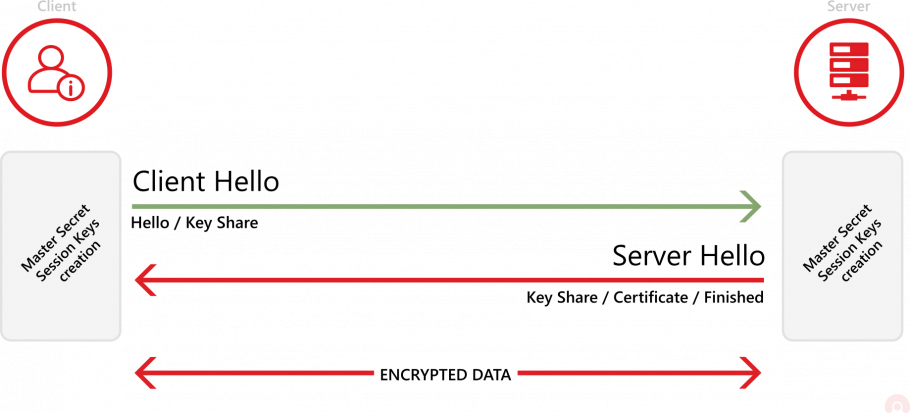TLS 1.3 Handshake: Streamlining Security with Diffie-Hellman
19 Jul 2025The Diffie-Hellman key exchange is a vital component of the Transport Layer Security (TLS) protocol, especially in its latest version, TLS 1.3. TLS 1.3 dramatically improves upon its predecessors by offering enhanced security, improved privacy, and reduced latency, largely due to a streamlined handshake process that heavily relies on ephemeral Diffie-Hellman (EDH) or Elliptic Curve Diffie-Hellman Ephemeral (ECDHE) for key exchange.
Key Features of the TLS 1.3 Handshake:
- Reduced Round Trips: Unlike earlier TLS versions that required two or more round trips (messages back and forth) to establish a secure connection, TLS 1.3 often achieves this in just one round trip (1-RTT). This significantly reduces latency and speeds up website loading times.
- Proactive Key Exchange: In TLS 1.3, the client sends its key share (parameters for the Diffie-Hellman exchange) in its very first message (
ClientHello). This allows the server to immediately perform its part of the key exchange and include its key share in theServerHellomessage. - Encrypted Handshake: A significant security enhancement in TLS 1.3 is that much of the handshake process, including server certificates, is encrypted after the
ServerHello. This protects sensitive information from passive eavesdropping. - Perfect Forward Secrecy (PFS): TLS 1.3 mandates the use of ephemeral key exchange mechanisms like EDH or ECDHE. This means that a new, unique session key is generated for each connection. If a long-term private key is ever compromised, it cannot be used to decrypt past communications, providing “perfect forward secrecy.”
- Stronger Cipher Suites: TLS 1.3 has deprecated older, less secure cryptographic algorithms and only supports a limited set of strong, modern cipher suites, further bolstering security.
Simplified TLS 1.3 Handshake Steps:

- ClientHello: The client initiates the handshake by sending a
ClientHellomessage. This message includes the client’s supported TLS versions (indicating TLS 1.3), a list of supported cipher suites, a random number, and crucially, its Diffie-Hellman key share. - ServerHello & Key Exchange: The server receives the
ClientHello. It then selects a cipher suite, generates its own random number, and sends its Diffie-Hellman key share in theServerHellomessage. At this point, both client and server have enough information to independently calculate the shared secret key using the Diffie-Hellman algorithm. The server also sends its certificate (now encrypted) and a “Finished” message, indicating it has completed its part of the key exchange. - Client Finishes: The client receives the
ServerHello, verifies the server’s certificate, calculates the shared secret key, and sends its own “Finished” message. - Application Data: Once the “Finished” messages are exchanged and verified, the secure symmetric encryption is established, and application data can be transmitted securely.
In essence, Diffie-Hellman key exchange provides the mathematical bedrock for securely generating shared secrets, and TLS 1.3 masterfully integrates this principle to create a faster, more private, and significantly more secure internet.